Characteristics of Zirconium
The element zirconium is a very strong but soft, malleable metal. Zirconium is a lustrous silver metal with the chemical symbol Zr. It is highly resistant to corrosion and heat. Zirconium is a ductile metal and as a fine powder is highly flammable. Zirconium is almost always found paired with the element hafnium (Hf). Zirconium is predominantly associated with the minerals zircon and baddeleyite, which are the primary ores of the element (Table 1).
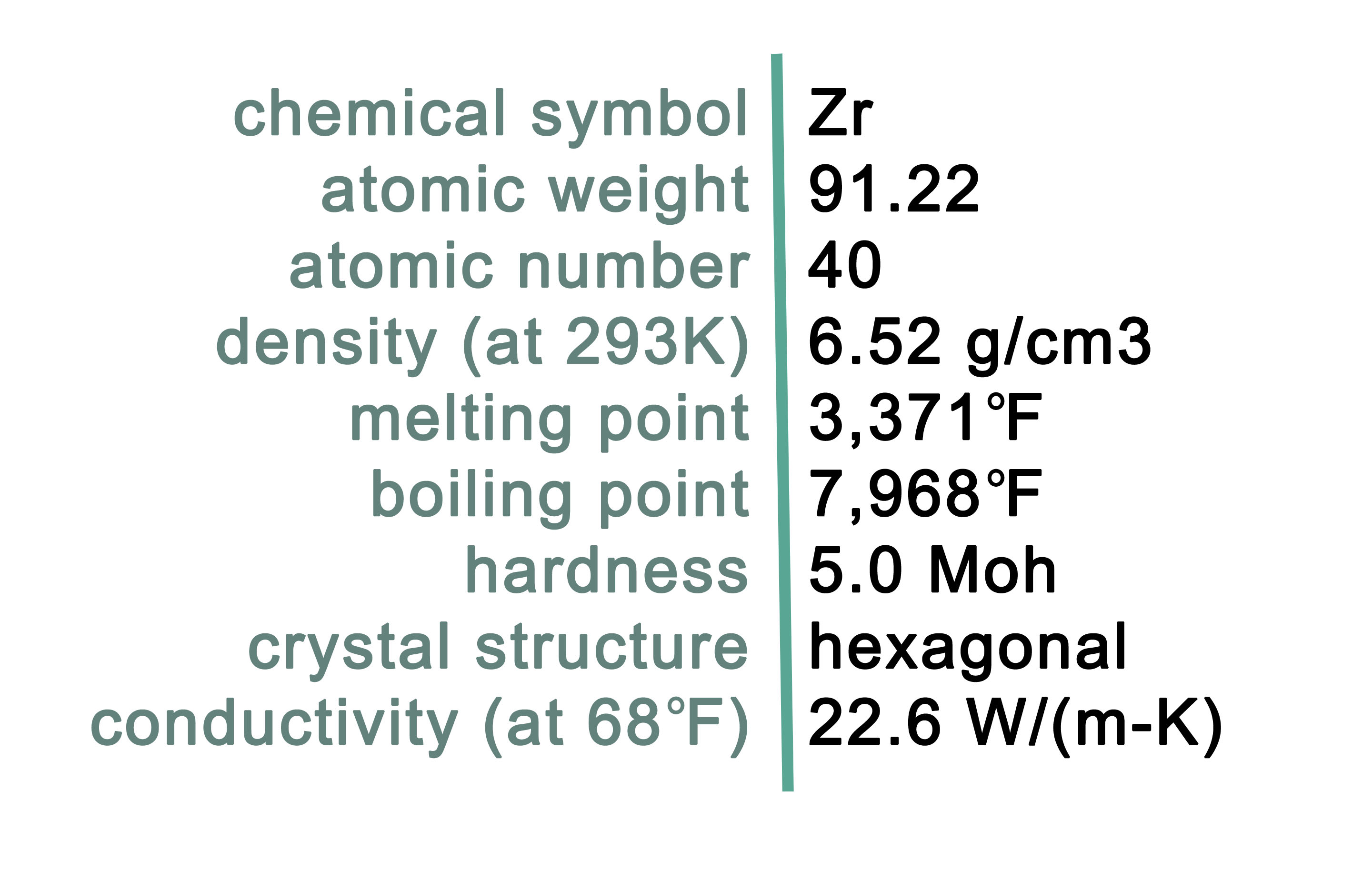
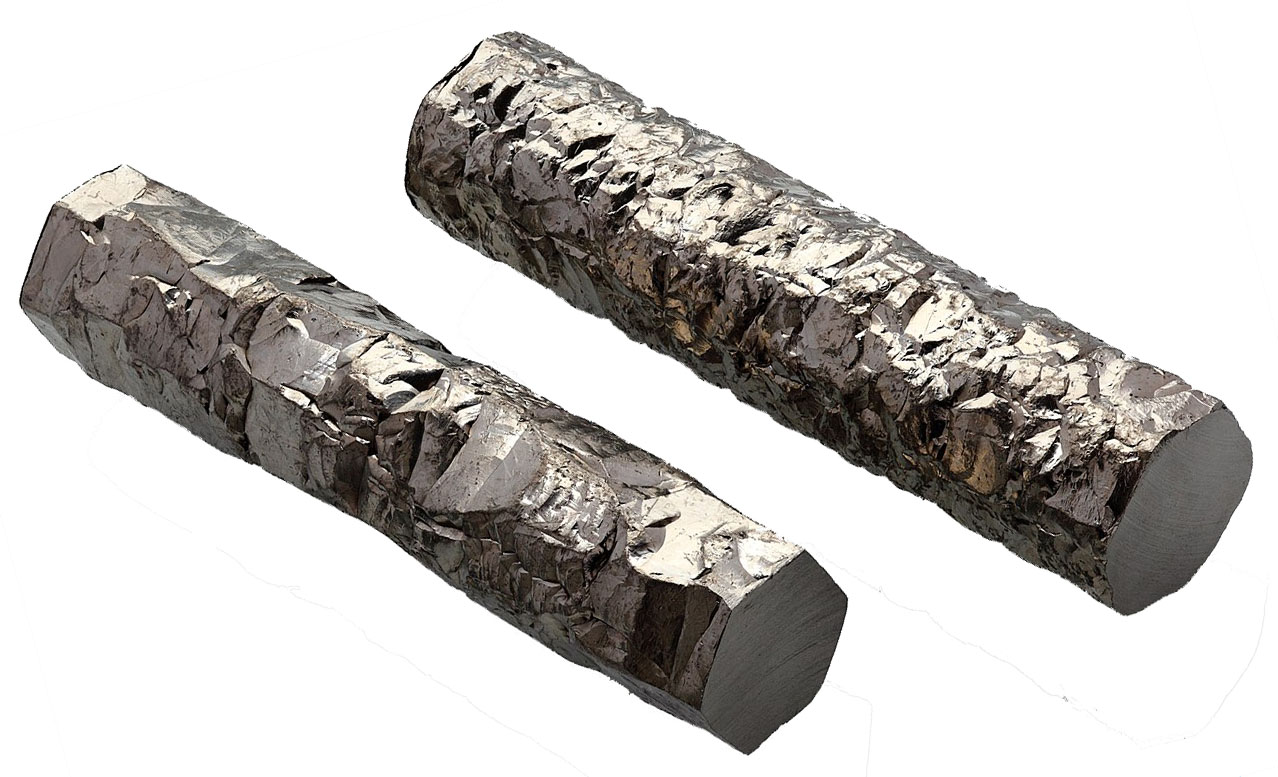
| Mineral Name | Chemical Formula | Specific Gravity | Zr % |
|---|---|---|---|
| Zircon | ZrSiO4 | 4.6-4.7 gm/cc | 43.14 |
| Baddeleyite | ZrO2 | 5.5-6.0 gm/cc | 74.03 |
| Kosnarite | KZr2(PO4)3 | 3.2 gm/cc | 36.02 |
| Eudialyte | Na4Ca1.5Ce0.5Fe2+0.6Mn2+0.3Y0.1ZrSi8O22(OH)1.5Cl0.5 | 2.9 gm/cc | 9.19 |
| Hafnon | (Hf,Zr)SiO4 | 6.97 gm/cc | 2.24 |
Table 1: Minerals containing the element Zirconium

Uranium pellets are safely contained within
zirconium-coated nuclear reactor fuel rods.
Uses of Zirconium
Zirconium was discovered in 1789. Zirconium is considered a "critical mineral" in domestic metallurgical applications that serve aerospace, defense, and energy technologies (Fortier and others, 2018). There are many uses for zirconium. Due to its non-reactive nature, zirconium may be used in alloys for pipes and fittings in corrosive environments. Zirconium is also used as an opacifier in high temperature ceramics, as an abrasive, in lamp filaments, catalytic converters, surgical instruments, and furnace bricks. It can be used to harden steel and shape molten metals as a mould. Zirconium is also useful in the nuclear-reactor industry as a corrosion-resistant and low-neutron absorbing casing for fuel rods. Scientists also use the mineral zircon for geochronology.
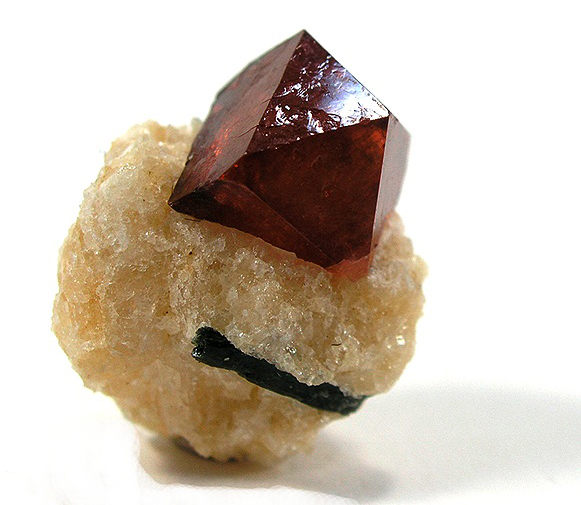
A zircon crystal. Photo courtesy
of Robert Lavinsky, iRocks.com
Zirconium Geology
Zirconium is often found with the elements hafnium and titanium in igneous and metamorphic rocks. Zirconium originates from the cooling and crystallization of magma as it mixes with the surrounding rock in the Earth's crust, where zirconium is common. Igneous rock forming from deep mantle-sourced magma may have a greater concentration of zirconium, as the shallow mantle is relatively depleted in the element. Because zirconium-containing minerals, such as zircon, are highly resistant to weathering, they eventually erode out of host rocks and may accumulate elsewhere as heavy mineral sand placer deposits. Economic deposits of heavy minerals may be found in modern sediment accumulations as well as in ancient beach deposits that may be far inland from today's shorelines.
| Mineral System | Deposit Type | Geologic Provinces |
|---|---|---|
| Placer | Paleo-placer in Pliocene sediments (heavy mineral sands) | Coastal Plain |
Table 2: Prospective zirconium mineral systems, deposit types (Hofstra and Kreiner, 2020), and geologic provinces in Virginia
Zirconium in Industry
Although zirconium is relatively abundant globally, the element is typically distributed in low concentrations. The U.S. does not maintain a supply of zirconium in the National Defense Stockpile, and is approximately 50 percent reliant on zirconium ore and concentrate imports from South Africa, Senegal, and Australia. The United States also exports zirconium. In the United States, zirconium is mined in Florida and Georgia. Concerns related to mining for zirconium include erosion from surface mining, disruption of the surrounding ecosystem, and inhalation of zirconium dust during industrial processing.
In Virginia, Zircon is sourced from deposits of heavy mineral sands. Zircon, in addition to ilmenite and rutile, occur as paleoplacer deposits along an ancient coastline that is now exposed primarily in Dinwiddie and Greensville Counties. The heavy minerals were naturally concentrated by wind and wave action in beach and sand dunes about 3 to 4 million years ago during the Pliocene Epoch, when the shoreline of the Atlantic Ocean was at a higher elevation (near Richmond).
Hanover County
Several historic prospects for zirconium (from zircon) have been reported near the town of Ashland in the Hanover County. Samples of sandstone rich with ilmenite and zircon were identified in 1910 along the contact of the Petersburg Granite and overlying Calvert Formation sands. Although samples contain approximately 30 percent zircon by weight, the area was not industrially mined (Watson and Hess 1913).
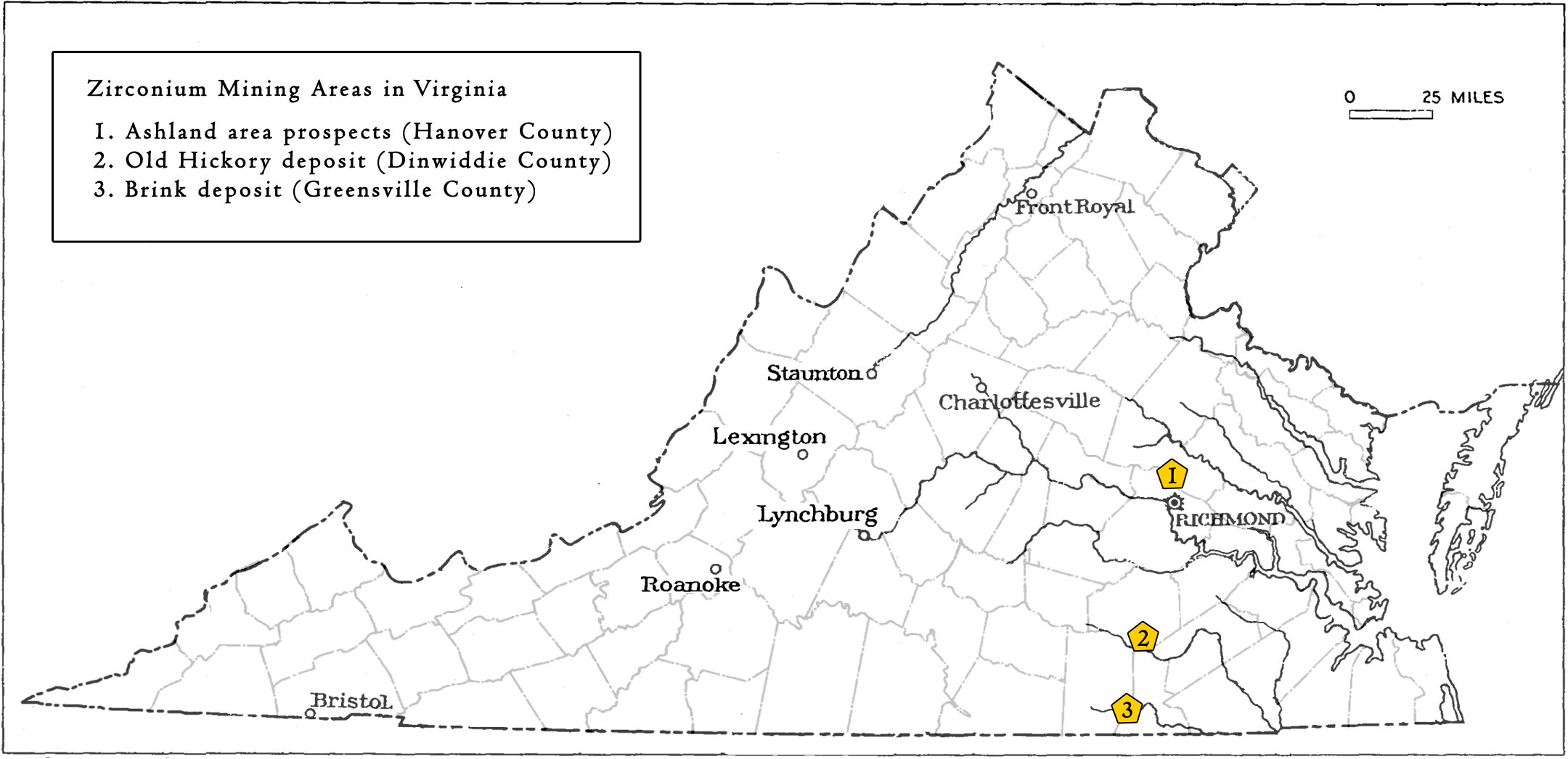
Areas prospected and mined for Zirconium in Virginia
Dinwiddie and Greensville Counties
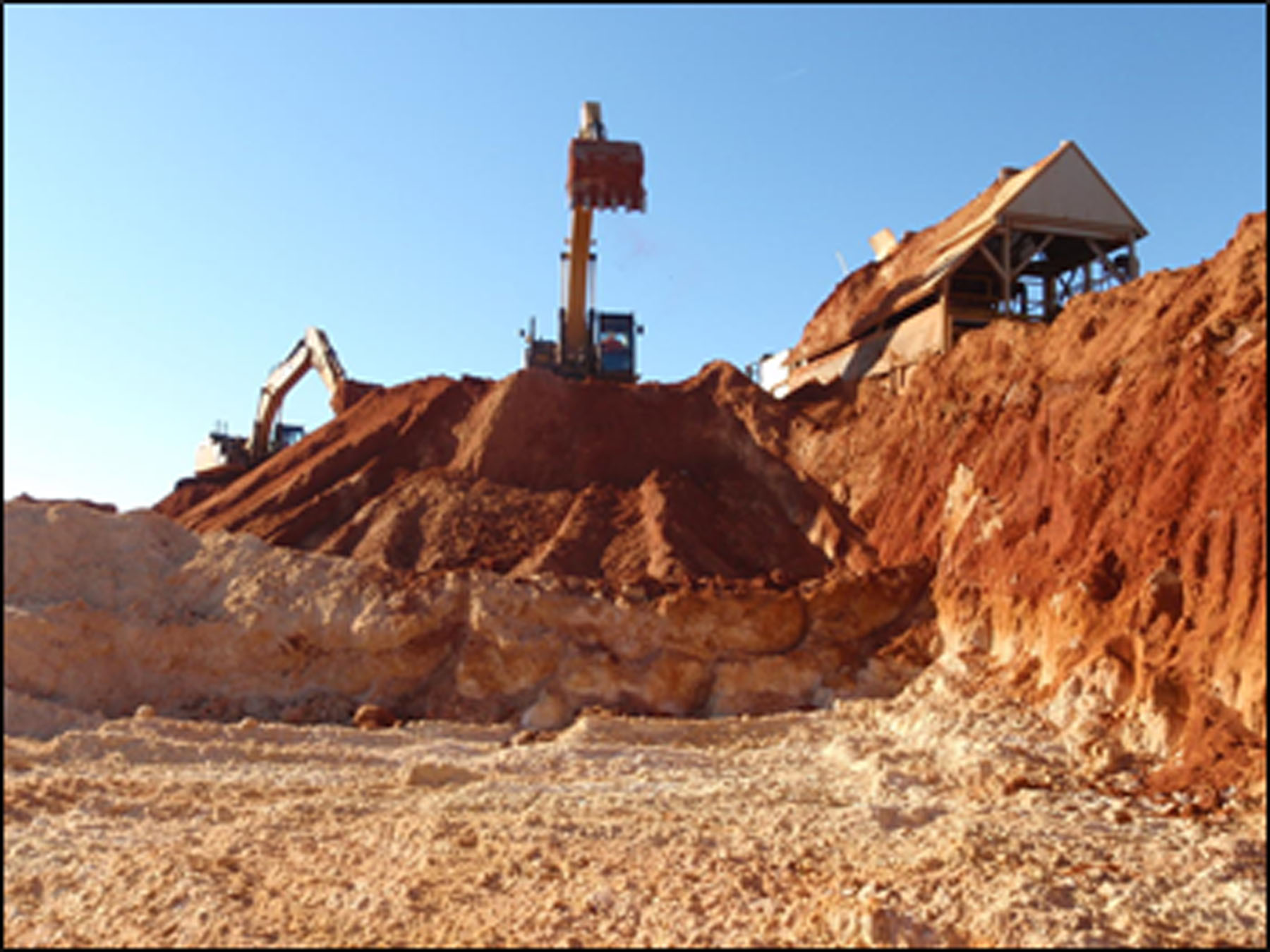
The Concord heavy mineral sands mine.
USGS, Bradley Van Gosen
In eastern Dinwiddie and Greensville Counties, economic heavy mineral sands containing zirconium occur as paleoplacer deposits along a now exposed ancient coastline. The heavy minerals were naturally concentrated in Pliocene-age shoreline beach and dune sands by wind and wave action. The key heavy minerals in these deposits include ilmenite, rutile, zircon, and leucoxene (mixture of altered titanium bearing minerals). In 1996, mining and processing of the heavy mineral sands began from the Old Hickory deposit. A second mine (Brink) was permitted about 19 miles to the south in Greensville County in 2008. At both sites, heavy mineral sands are mined by excavator and then processed to separate each heavy mineral (ilmenite, leucoxene, rutile, and zircon) by weight and magnetism. In 2017, Iluka Resources Ltd. suspended operations, but continues to hold mining leases in these areas.
As of 2024, Atlantic Strategic Minerals have restarted mining operations at their Millrun Mine near Stony Creek, VA (https://www.atlanticstrategicminerals.com/). Additional investigations regarding heavy mineral sands hosting zirconium resources have been completed as part of the Earth MRI program.
The Pliocene heavy mineral sand deposits are considered an onshore analog for what may represent an undiscovered economic resource contained in sand shoals that have formed on Virginia's outer continental shelf. In an investigation that included analysis of 390 sediment samples from offshore vibracore and grab samples, Berquist (1990) reported concentrations of one or more economic minerals that were equal to or greater than the economic cut-off grades for onshore deposits. The Virginia Division of Geology and Mineral Resources is conducting investigations to assess the offshore resource potential.
Selected References:
Bedinger, G.M., 2017, Zirconium and Hafnium: U. S. Geological Survey 2015 Minerals Yearbook, p. 86.1-86.7
Berquist, C.R. Jr., 1990, Chemical analyses of offshore heavy-mineral samples, Virginia inner continental shelf. In: Berquist, C.R., Jr., (ed), Heavy mineral studies - Virginia inner continental shelf: Virginia Division of Mineral Resources Publication 103, p. 109- 124.
Berquist, C.R. Jr., 2010, Heavy Mineral Analyses of Four Samples, Virginia Coastal Plain (October 2010), Virginia Division of Mineral Resources.
Conley, J. F., Fordham Jr., O. M., and Toews, E. C., 1977, Statistical study of Zircon populations from igneous and metamorphic rocks in the Martinsville West Quadrangle, Virginia. Virginia Division of Mineral Resources Open File Report 43.
Fortier, S.M., Nassar, N.T., Lederer, G.W., Brainard, J., Gambogi, J., and McCullough, E.A., 2018, Draft Critical Mineral List - Summary of Methodology and Background Information - U.S. Geological Survey Technical Input Document in Response to Secretarial Order No. 3359: U.S. Geological Survey Open-File Report 2018-1021, 15 p.
Hofstra, A.H., and Kreiner, D.C., 2020, Systems-Deposits-Commodities-Critical Minerals Table for the Earth Mapping Resources Initiative: U.S. Geological Survey Open-File Report 2020-1042.
Lassetter, W.L., and Blanchette, J.S., 2019, Economic heavy minerals on the continental shelf offshore of Virginia - new insights into the mineralogy, particle sizes, and critical element chemistry: Virginia Division of Geology and Mineral Resources Open-File Report 2019-03.
Newton, M.C. and Romeo, A.J., 2006, Geology of the Old Hickory heavy mineral sand deposit, Dinwiddie and Sussex Counties, Virginia. In: Reid, C.J. (ed), Proceedings of the 42nd Forum on the Geology of Industrial Minerals. North Carolina Geological Survey, Information Circular 34, p. 464-480.
Virginia Division of Mineral Resources, 1993, Geologic Map of Virginia: Virginia Division of Mineral Resources, scale 1:500,000.
Watson, T. L. and Hess, F. L., 1913, Zirconiferous sandstone near Ashland, Virginia in Watson, T. L., Biennial report on the mineral production of Virginia during the calendar years 1911 and 1912, Virginia Geological Survey Bulletin 8.
Zirconium and Hafnium, Chapter V in Critical Mineral Resources of the United States - Economic and Environmental Geology and Prospects for Future Supply. U.S. Geological Survey Professional Paper 1802-D
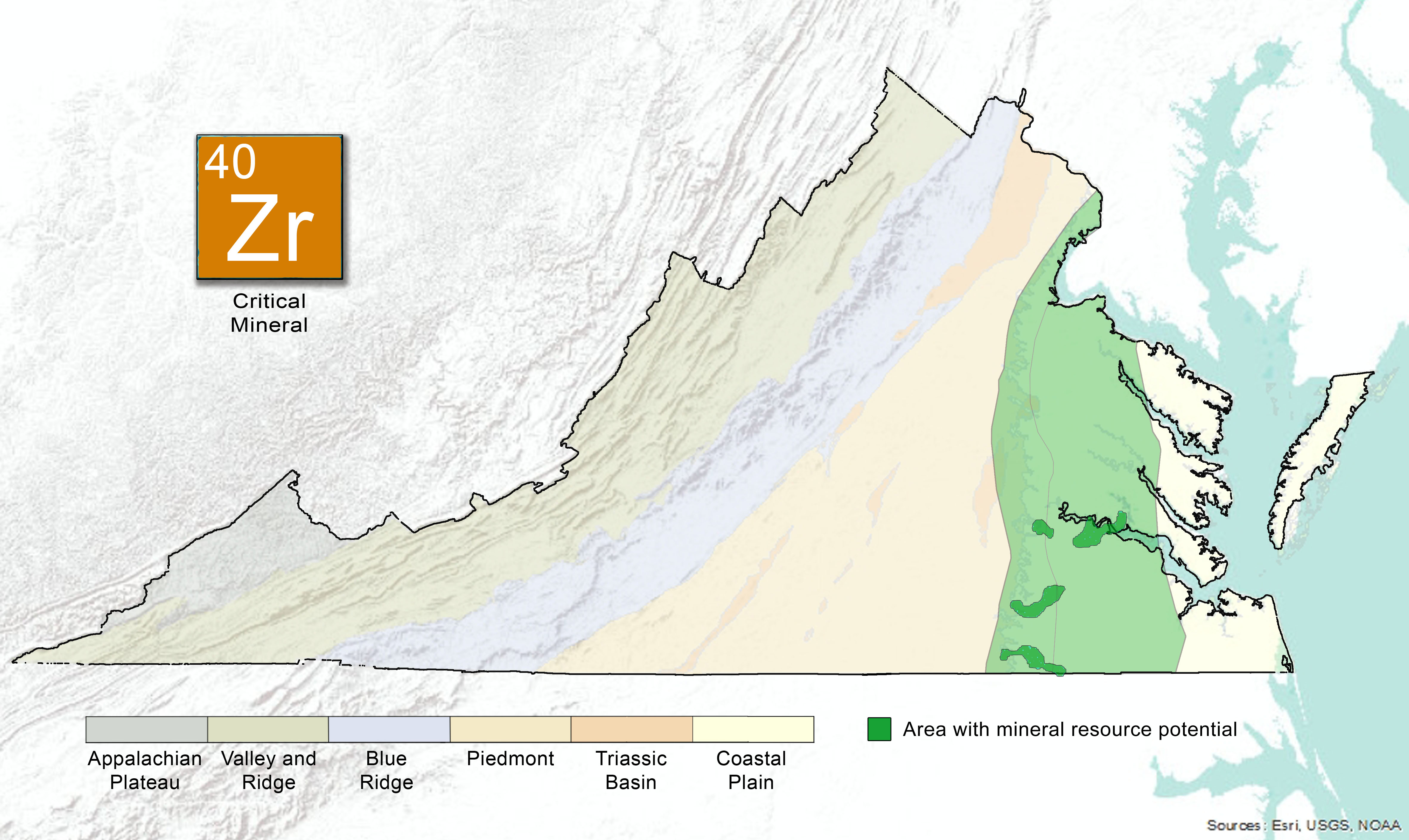

.jpg)
